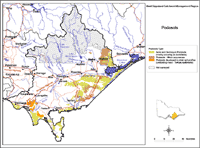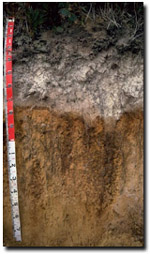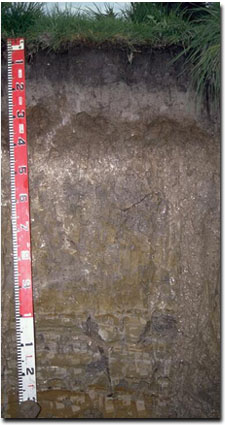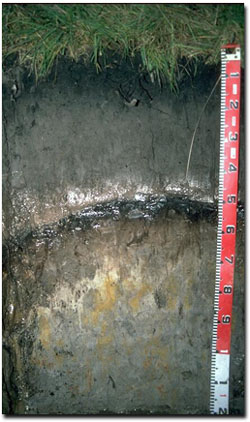Podosols
Podosols (Australian Soil Classification) are mainly sandy soils with accumulations of organic materials and aluminium (with or without iron compounds) in subsoil horizons.
 Podosols in the West Gippsland Region |
This overview map of Podosols in the West Gippsland region has been developed from more detailed regional soil/landform mapping (Sargeant and Imhof, In press). It shows areas where Podosols are most likely to occur within the region and should only be used as a general indication of their distribution. Note that other soil types may also occur within these mapped areas. |
 Aeric Podosol at Bald Hills. |
Along parts of the coastline, siliceous sands have been deposited by wind during the Holocene period. Typically, Aeric Podosols have developed in these dunes. These deep sandy soils are strongly acidic and have accumulations of 'coffee rock' in the subsoil. |
|
South of Leongatha, Podosols occur (along with other soils) on Tertiary and early Pleistocene sediments. These have been formed within the surface horizons of older soil profiles (e.g. Kurosols). |  Semiaquic Podosol formed within an earlier Grey Kurosol near Inverloch. |
 Aquic Podosol at Bald Hills Reserve. |
Podosols occur on French Island, around Nyora and on inland dunefields and sand plains across southern and eastern parts of the region. Aeric Podosols generally occur on well drained dunes and Aquic Podosols generally occur in poorly drained lower-lying areas. |


